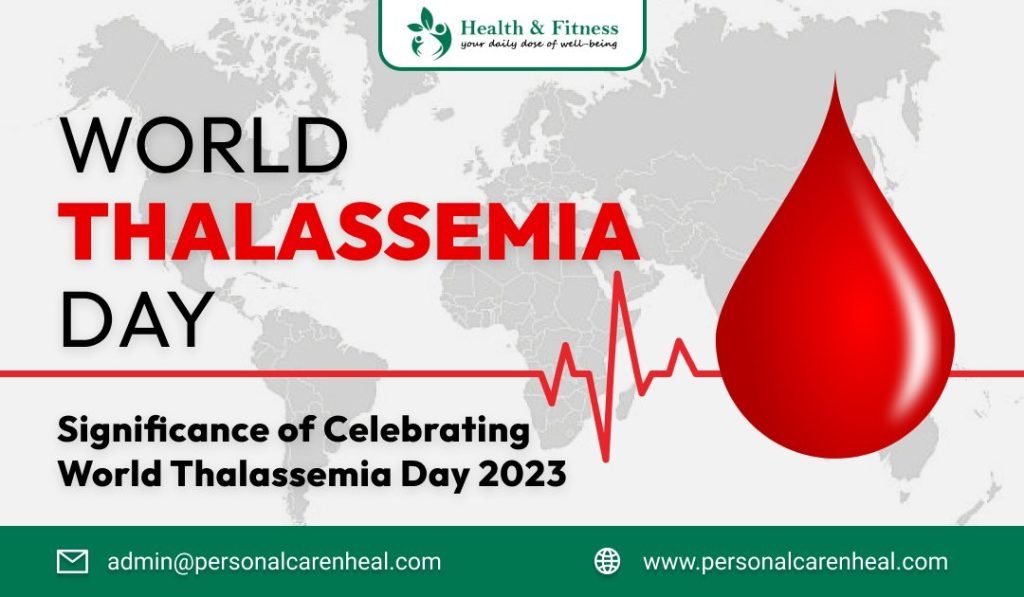
Annually, World Thalassemia Day is marked on 8 May 2023. This day is dedicated to those who are struggling with thalassemia disease. In India, 10,000 to 15,000 children are affected with thalassemia every year when they are born. This disease is a blood disorder in which the body doesn’t produce the right amount of haemoglobin. This disease usually passes from parent to child.
Everything About Thalassemia Disease
Thalassemia has two types of forms, such as Alpha and Beta. They are further categorised, such as thalassemia minor, thalassemia intermedia, and thalassemia major. The disorder can result in pale skin, anaemia, breath shortness, extreme fatigue, yellowish skin, darkened skin, enlarged spleen, pulmonary hypertension, and irregular heartbeats.
History of World Thalassemia Day
Thalassemia International Federation (TIF), in 1994, organised International Thalassemia Day. TIF is a non-profit organisation and was established in 1986. It was founded by Panos Englezos, patients of thalassemia and their parents who represented the National Thalassemia Association in Greece, the USA, the UK, Cyprus, and Italy. In memory of Mr Panos’ son, George, International Thalassemia Day was first observed as he had died because of this disease.
World Thalassemia Day 2023 Theme
This year, the theme is “Be Aware. Share. Care: Strengthening Education to Bridge the Thalassaemia Care Gap”. To continue with the last year’s theme, “Be Aware. Share. Care” they created this theme. The theme emphasizes enhancing the skills and knowledge of people impacted by this disease so that positive effects can be achieved regarding the quality of life and good healthcare.
Importance of World Thalassaemia Day (WTD)
Thalassaemia is a condition that is passed down through genetics in an autosomal recessive pattern from one or both parents. The disorder impacts red blood cells by causing a genetic mutation that results in a shortage of alpha and/or beta-globin chains in haemoglobin. This leads to reduced production of red blood cells and inadequate oxygen supply to different parts of the body, resulting in anaemia.
Worldwide, this disease affects 56,000 pregnancies, of which 30,000 are suffering from thalassemia major. The treatment of thalassemia major is expensive and may involve stem cell transplants, chelation therapy and continual blood transfusions. Therefore, it is important to prevent congenital defects before birth.
Prenatal screening can help in recognising the condition of thalassemia at the foetal stage, and its awareness among people in controlling the thalassemia count. World Thalassaemia Day allows governmental and private organisations to carry out public education and healthcare campaigns for pregnant women, including counselling, genetic screening, and prenatal diagnosis.
Screening for Thalassaemia
Before the baby is born, prenatal testing is conducted as part of the screening process to assess the presence of thalassemia. The tests utilized to accomplish this are as follows:
Chronic Villus Sampling
Usually, between the 11th and 14th weeks of gestation, a minute piece of placental tissue is obtained for further assessment by inserting a slender needle through the mother’s belly.
Amniocentesis
During pregnancy, around the 16th week, a fine needle is inserted through the mother’s abdomen into the uterus to extract a small sample of the fluid surrounding the baby. This fluid contains some of the baby’s cells, which can be screened for thalassemia.
Prevention of Thalassaemia
Even though thalassemia can’t be cured, the following measures can minimize the risk of having thalassemia in newborns.
Prenatal screening
Preimplantation genetic diagnosis
Parent genetic test for the thalassemia gene’s presence
Promoting public awareness and educating people about thalassemia
Conclusion
The blog shares the importance of celebrating and spreading awareness regarding World Thalassaemia Day. Moreover, you can subscribe to Personal Care N Heal to get more informative blogs.


